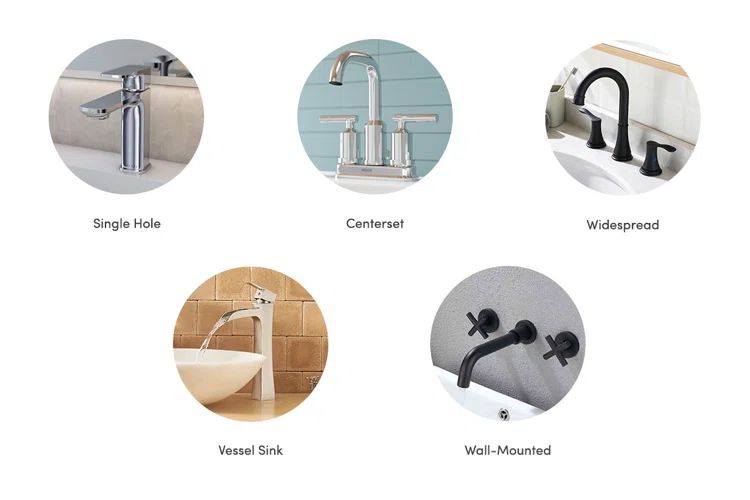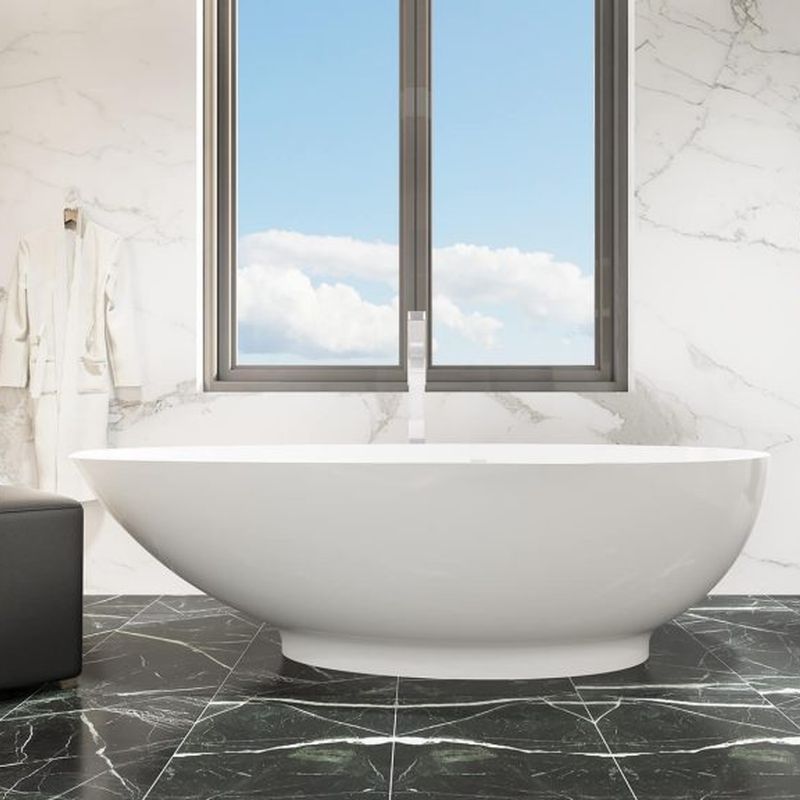 English
English
Jabra Sanitary is a sanitaryware supplier offering toilets, sinks, faucets, bathtubs, etc., at competitive prices. If you're a distributor, wholesaler, or project contractor, get a quote today!
 $23.9 Limited-time Offer
$23.9 Limited-time Offer Consignment Policy
Consignment Policy 20 Years of Experience
20 Years of Experience
Stainless steel sinks have long been a popular choice when it comes to selecting the best sink for your home. They are known for their durability, resistance to stains, and modern aesthetic. Their timeless appeal has made them a staple in both residential and commercial spaces.
In this beginner's guide, we'll explore good-quality stainless steel sinks and their types, pros and cons of stainless steel sinks, sizes of stainless steel kitchen sinks, the factors to consider when choosing one, and how to maintain your stainless steel sink.
Whether you're replacing an old sink or installing a new one, understanding all about stainless steel sinks will help you make an informed decision that fits your lifestyle and home design.
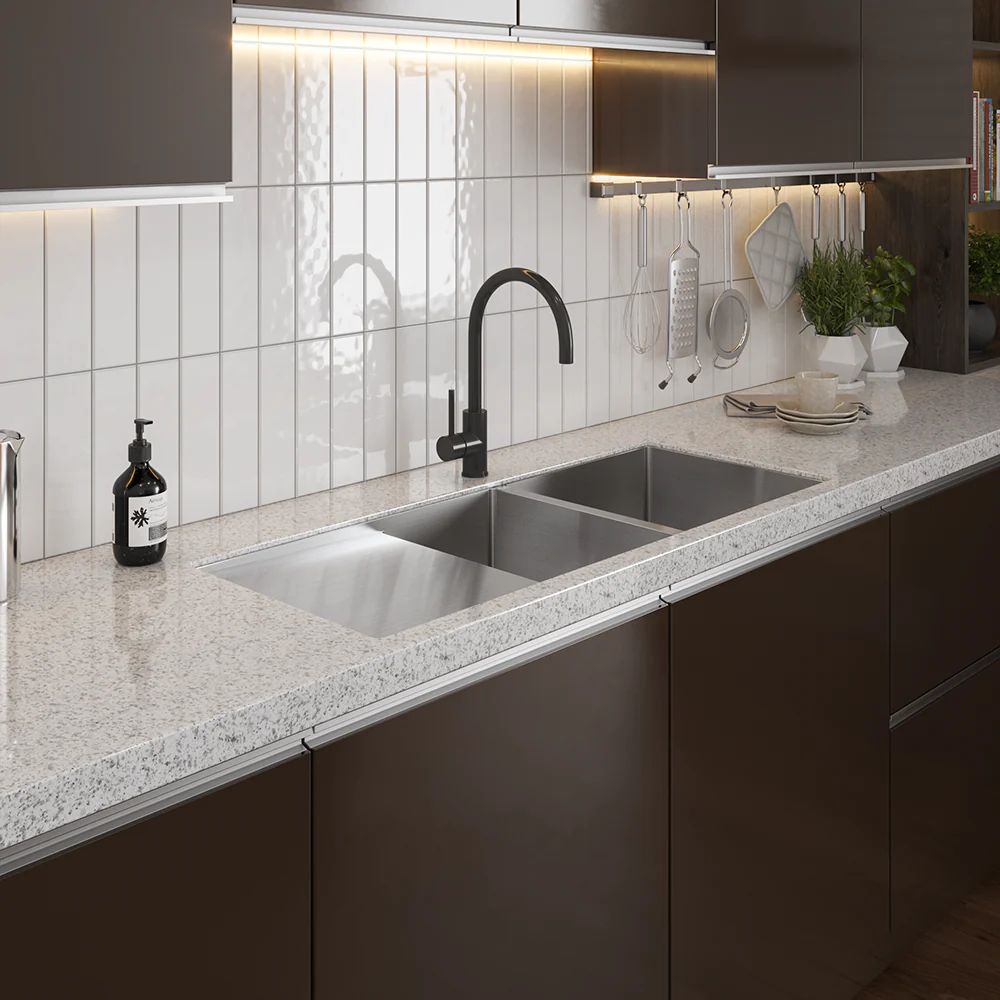
Table of Contents
What Makes a Good-Quality Stainless Steel Sink
The Pros and Cons of Stainless Steel Sinks
Should You Buy a Stainless Steel Sink?
Standard Stainless Steel Kitchen Sink Sizes
Types of Stainless Steel Sinks
How Much Do Stainless Steel Sinks Cost?
How to Maintain a Stainless Steel Sink
Choosing the Best Stainless Steel Sinks for Your Kitchen
FAQs
Summary
What Makes a Good-Quality Stainless Steel Sink
When selecting a stainless steel sink, it's important to consider several key factors determining its quality, durability, and overall performance.
Here are the critical aspects to keep in mind:
1. The Grade of the Stainless Steel
The grade of stainless steel refers to the alloy composition used in the sink. The most common grades for kitchen and bathroom sinks are 304 and 316 stainless steel.

304 Grade: This is the most commonly used grade for sinks. It consists of 18% chromium and 8% nickel, which gives it excellent resistance to rust, stains, and corrosion. It's durable enough for most residential applications.
316 Grade: Often used in marine and industrial applications, this grade has added molybdenum to resist pitting and corrosion. It is ideal for areas exposed to harsh chemicals or salty environments, like coastal homes.
A higher-grade stainless steel sink offers enhanced corrosion resistance, making it a more durable option in the long run.
2. The Gauge (Thickness of the Material) of the Stainless Steel
The gauge of stainless steel refers to its thickness, with a lower number indicating a thicker material. For sinks, the typical gauge ranges from 16 to 22.

16-18 Gauge: These are the best choices for quality sinks, offering a good balance between durability and noise reduction. They are thick enough to resist dents, maintain structural integrity, and withstand everyday wear and tear.
20-22 Gauge: While these gauges are lighter and more affordable, they may be more prone to dents and noise. These gauges are often found in budget-friendly sinks.
When choosing a sink, opting for a thicker gauge ensures long-term durability and better noise reduction.
3. Stainless Sink Series
The sink series is intertwined with its grade. The 300 series of stainless steel is the most common. Among them, 304 stainless steel with 18/8 grade and 316 stainless steel with 18/10 grade are the most prevalent. Additionally, the 400 series can also be seen, including 409, 420, 430 and 434 grades.
When selecting a sink, it's essential to choose a series that matches the type of usage you expect from it.
4. The Depth for Stainless Steel Sinks
The depth of a stainless steel sink is another important factor in determining its quality and functionality. Deeper sinks offer greater versatility, especially for washing large pots or handling a high volume of dishes.
Most residential sinks have a depth of around 8 to 9 inches. For those looking for more functionality, sinks with a depth of 10 to 12 inches are available.
Deeper sinks can also help reduce splashing and contain messes better, making them more convenient for busy households. <Check standard bathroom basin height>
5. Insulation and Coatings
Good-quality stainless steel sinks often come with soundproofing or insulation layers to reduce noise and improve the overall user experience. These coatings are applied to the underside of the sink to minimize the noise from water and dishes hitting the basin.
Soundproof Coatings: High-quality sinks often come with a layer of sound-deadening material that reduces clatter and vibration. They provide a quieter experience in busy kitchens or bathrooms.
Protective Coatings: Some sinks are coated with protective finishes to reduce water spots, stains, and finger marks, making them easier to maintain and cleaner-looking for longer periods.
6. Sink Finish
The finish of a stainless steel sink not only influences its appearance but also its maintenance and resistance to damage. Common finishes include:

Brushed Sink Finish: A matte and satin-like finish that hides scratches and fingerprints, making it ideal for kitchen environments. This finish is the most popular for residential use.
Polished Sink Finish: A shiny and mirror-like finish that looks sleek and modern. But it is more susceptible to showing fingerprints, water spots, and scratches.
Satin Finish: Similar to a brushed finish, a satin stainless steel sink offers a smooth and low-glare surface that resists stains and fingerprints while maintaining a professional and clean appearance.
The Pros and Cons of Stainless Steel Sinks
When choosing a stainless steel sink for your home, it's important to understand the pros and cons of stainless steel sinks. Here's a breakdown:
1. Pros of Stainless Steel Sinks
Durability and Longevity
Stainless steel sinks are very durable. They can handle daily use without cracking, chipping, or breaking. Whether it's a stainless steel kitchen sink or a bathroom sink, stainless steel lasts for many years.
Resistant to Corrosion and Rusting
Stainless steel resists corrosion and rust. It forms a protective layer that prevents rust, even when exposed to water. This makes it a great option for kitchens and bathrooms.
Aesthetic Appeal and Versatility
Stainless steel sinks look modern and sleek. They come in different finishes like brushed, polished, or satin, making them fit well with many types of home decor. Stainless steel also blends easily with other materials like stone, granite, or wood.
Easy Maintenance and Hygiene
Stainless steel sinks are easy to clean. Their smooth surface resists stains, and they don't trap bacteria, which helps keep your kitchen or bathroom hygienic. A simple wipe-down with mild detergent keeps it looking fresh.
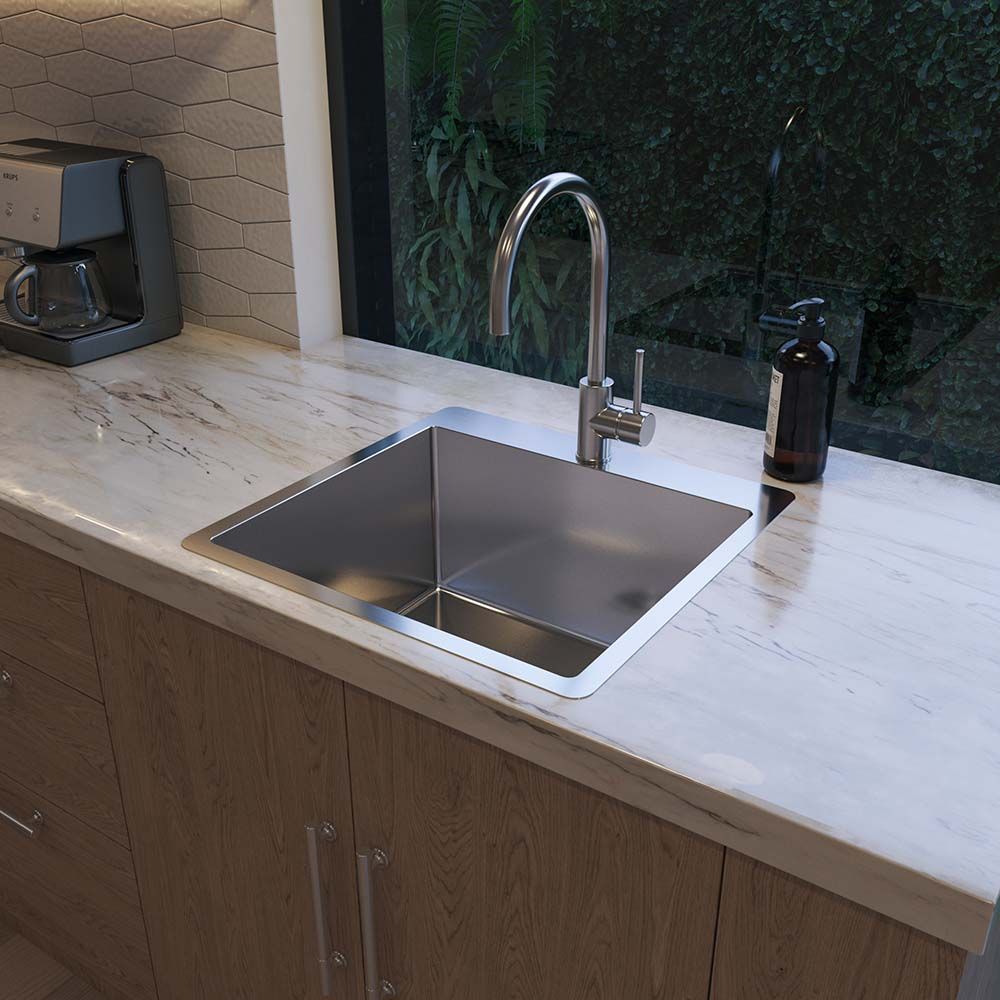
2. Cons of Stainless Steel Sinks
Noise Factor
Stainless steel sinks can be noisy. The sound of water or dishes hitting the metal can echo. Some sinks have soundproof coatings to reduce noise, but it can still be a concern for people who prefer a quieter sink.
Susceptibility to Scratches and Dents
While durable and stainless steel sinks can scratch or dent. Sharp objects or heavy items may leave marks. However, these marks usually blend in over time, and minor scratches can often be buffed out.
Water Spots and Smudges
Stainless steel sinks show water spots and fingerprints easily, especially if you have hard water. Regular cleaning is needed to keep the sink looking clean and shiny.
Variability in Quality
Not all stainless steel sinks are the same. Some are made from lower-quality steel, which can affect their durability and appearance. It's important to choose a high-quality sink from a reliable manufacturer to ensure it lasts longer.
Should You Buy a Stainless Steel Sink?
When deciding if a stainless steel sink is right for your home, consider your budget, style preferences, and how you'll use the sink.
Here's what to think about before making your decision.
1. Durability and Long-Term Investment
Stainless steel sinks are known for being durable. They can handle heavy use, especially in busy kitchens.
While the finish can scratch over time, many people find that the long-lasting durability makes it worth it.
2. Resistant to Corrosion and Rusting
Stainless steel is resistant to rust, stains, and corrosion.
3. Budget Considerations
Stainless steel sinks are generally affordable compared to other materials like granite or marble. However, prices can vary based on factors such as sink design, brand, and extra features like soundproofing.
If you're on a budget, you can find good options, but higher-end models may cost more.
4. Maintenance and Ease of Cleaning
One of the best things about stainless steel sinks is how easy they are to clean. They don't require special care like some other materials do. A quick wipe-down is enough to keep the sink looking good.
5. Aesthetic Appeal and Versatility
Stainless steel sinks come in many styles and finishes that can match different home designs, from modern to traditional. Their neutral and shiny surface looks good with most countertops and décor.
6. Noise and Scratches
Stainless steel sinks can be noisy. The sound of water splashing and dishes clinking can be louder than other materials, especially if the sink isn't soundproofed.
They can also scratch or dent with regular use, which may affect their appearance over time. If noise or scratches are a concern, you might want a sink with added soundproofing or a more durable finish.
7. Fit for Your Needs
Think about how you will use the sink. If you cook often and need a deep and spacious sink, stainless steel is a good choice. It can handle large pots and dishes well.
But, if you're putting the sink in a small bathroom or a guest room, stainless steel may not be as important.
Standard Stainless Steel Kitchen Sink Sizes
If you want to choose a stainless steel kitchen sink, you should first know different sizes of different types. Here is a table that outlines standard stainless steel kitchen sink sizes:
Sink Type |
Small Size |
Medium Size |
Large Size |
Description |
|---|---|---|---|---|
Single Basin Sink |
15 inches x 20 inches |
18 inches x 24 inches |
20 inches x 30 inches |
Ideal for smaller kitchens or space-saving needs. |
Double Basin Sink |
22 inches x 33 inches |
24 inches x 36 inches |
30 inches x 40 inches |
Best for multitaskers who need separate spaces for washing and rinsing. |
Farmhouse Sink |
24 inches x 18 inches |
30 inches x 20 inches |
36 inches x 22 inches |
Offers a deep and large basin suitable for heavy-duty use and larger kitchens. |
Undermount Sink |
20 inches x 30 inches |
22 inches x 33 inches |
25 inches x 35 inches |
Installed below the countertop for a seamless and modern look. |
Top-Mount Sink |
22 inches x 33 inches |
24 inches x 36 inches |
25 inches x 36 inches |
Sits on top of the countertop, easier to install than undermount sinks. |
Deep Sink |
7 inches - 10 inches deep |
10 inches - 12 inches deep |
12 inches and deeper |
Perfect for washing large pots and pans or for deeper cleaning needs. |
Types of Stainless Steel Sinks
When choosing a stainless steel sink for your home, it's important to understand the different styles and configurations available. Below, we'll explore some of the most popular options:
Sink Type |
Description |
Key Features |
Typical Sizes (inches) |
|---|---|---|---|
Stainless Steel Farmhouse Sink |
Classic, deep basin with an exposed front, perfect for large items and high-traffic kitchens. |
Deep basin, exposed front, single or double bowl, ideal for rustic kitchens. |
30" - 36" (single bowl), 33" - 48" (double bowl) |
Stainless Steel Undermount Sink |
Installed underneath the countertop for a sleek, seamless look; easy to clean with no visible lip. |
Seamless design, easy to clean, pairs with various countertop materials, ideal for modern designs. |
24" - 36" (single bowl), 30" - 48" (double bowl) |
Black Stainless Steel Sinks |
Modern, fingerprint-resistant sink with a bold matte black finish that adds luxury and depth to the kitchen. |
Matte black finish, fingerprint-resistant, durable, complements contemporary designs. |
24" - 33" (single bowl), 33" - 48" (double bowl) |
Drop-In Sinks |
Easy-to-install top-mount sink with visible lip; fits into a pre-cut hole in the countertop. |
Easy installation, visible lip, fits most countertop materials, available in multiple sizes. |
22" - 33" (single bowl), 33" - 47" (double bowl) |
Single, Double, and Triple Bowl |
Different configurations of bowls offering versatility and functionality, suited to different kitchen needs. |
Single bowl (large items), double bowl (multitasking), triple bowl (large families or heavy usage). |
Single: 20" - 30", Double: 33" - 48", Triple: 47" - 72" |
How Much Do Stainless Steel Sinks Cost?
The price of a stainless steel sink can vary a lot based on factors like size, style, brand, and features. Below, we'll explain the factors that influence the price of stainless steel sinks and give you an idea of what to expect.
Price Range |
Sink Type |
Features |
|---|---|---|
Budget ($150 or less) |
Basic, thinner-gauge steel, smaller sizes, and usually single-basin or drop-in. |
Single-basin, drop-in, smaller sizes, lower-quality steel and less durable. |
Mid-Range ($150 - $500) |
18 or 20-gauge steel, extra features like soundproofing or deeper bowls. |
More durable, deeper basins, noise reduction and mid-tier brands, good for most homeowners. |
High-End ($500 - $1,500 or more) |
16 or 18-gauge steel and premium finishes like black stainless steel. |
Larger sizes, luxury finishes, double or triple bowls and advanced features like noise reduction. |
Installation Costs |
Installation costs range from $100 to $500, depending on the sink type and installation complexity. |
Drop-in sinks: lower cost; Undermount & farmhouse sinks: higher installation costs. |
How to Maintain a Stainless Steel Sink
To maintain the pristine condition of your stainless steel sink, follow these care tips for optimal results:
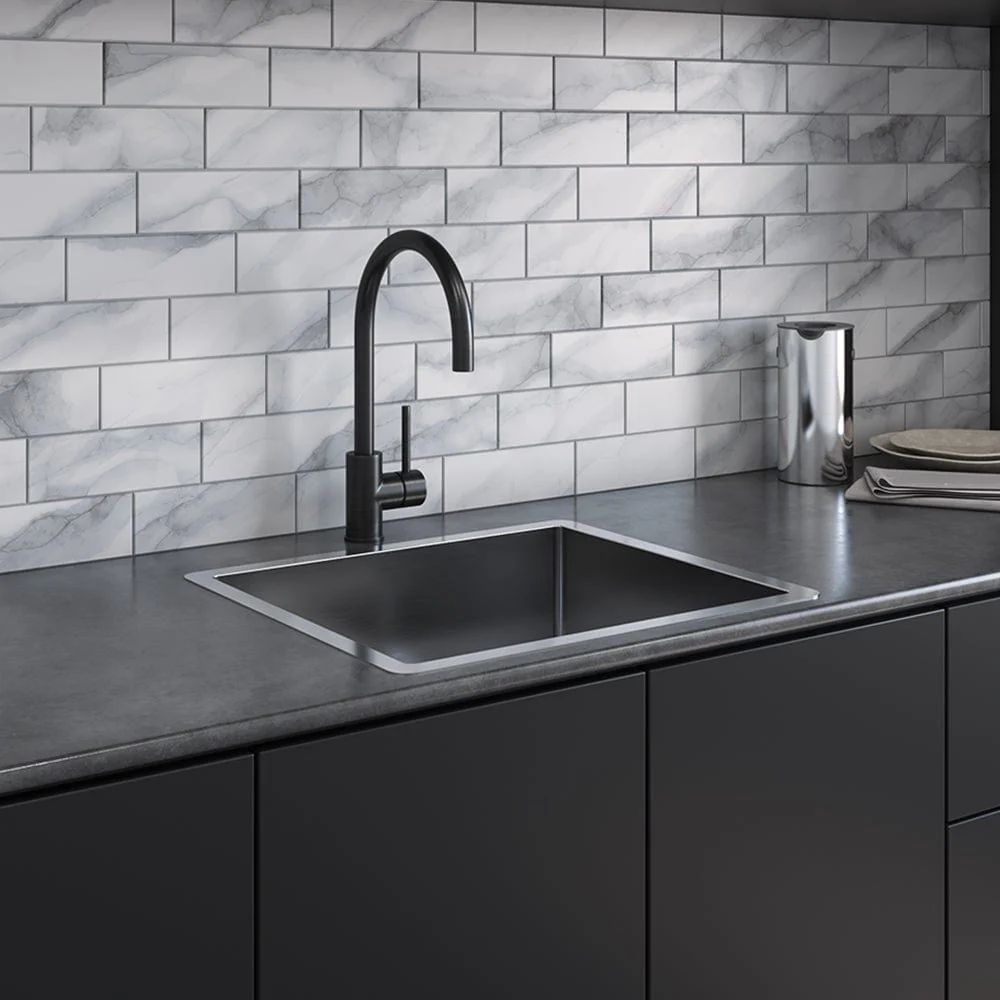
Routine Drying: Prevent water stains by ensuring the sink is thoroughly dried after each use. After cleaning, gently buff the surface with a soft cloth lightly coated with olive oil to protect the finish.
Sink Protection: Invest in a stainless steel sink grid to safeguard the sink's bottom from scratches. Avoid using rubber mats, as they can trap moisture and cause damage over time.
Avoid Staining Hazards: Refrain from placing metal cans or food particles in the sink that could potentially stain or damage the stainless steel surface.
Gentle Cleaning Tools: Steer clear of steel wool and wire brushes. Be cautious with sharp objects, as even high-quality stainless steel can be susceptible to scratches.
Chemical-Free Cleaning: Stay away from bleach-based cleaners, antibacterial soaps, and any cleaning products that contain chlorine, as these can corrode and damage stainless steel surfaces over time. Opt for mild and pH-balanced cleansers to keep your sink looking its best.
Choosing the Best Stainless Steel Sinks for Your Kitchen
When it comes to selecting the best stainless steel sink for your kitchen, consider the following factors to ensure both durability and style align with your home's aesthetic and functional needs.
Material Quality: Opt for sinks made from premium 304-grade stainless steel. This grade is the industry standard for a stainless steel kitchen sink due to its balance of strength and stain resistance.
316-grade stainless steel is also a good choice for people living in coastal areas. This is because molybdenum is added to resist pitting and corrosion.
Sink Depth and Bowl Configuration: The depth of the sink should be at least 7 inches to prevent splashing. Consider the number of bowls—single, double, or even a triple bowl kitchen sink.
A double-bowl kitchen sink is popular for separating prep and cleanup areas, while a triple one can be ideal for large families or those who entertain frequently.
Mounting Style: Choose between under-mount, drop-in, or flush mount styles. A stainless steel under-mount sink offers a seamless look and is easier to clean, while drop-in sinks are simpler to install and can cover existing cutouts.
Finish and Texture: Satin or brushed finishes are popular for their fingerprint-resistant properties and timeless appeal. Textured surfaces can help prevent items from sliding during use.
Accessories and Features: Look for features like sound-dampening pads and grids that protect the sink's surface from scratches. Drain setups, whether basket strainers or disposers, should also be considered based on your needs.
Size and Space: Measure your available space carefully and consider the sink's dimensions. Ensure it will fit comfortably into your kitchen layout without compromising on functionality.
Are you interested? Take advantage of our wholesale sink promotion today and upgrade your kitchen with high-quality stainless steel sinks at unbeatable prices.
FAQs
Are stainless steel sinks noisy?
Stainless steel sinks can be noisy due to the material's acoustic properties. However, the noise can be mitigated with sound-deadening techniques.
Soundproofing a sink involves applying a sound-absorbing material, typically rubber or similar material, to the bottom of the sink. This material absorbs and dampens vibrations, reducing the noise in the kitchen.
Is it normal for stainless steel to rust?
It is not normal for stainless steel to rust under typical conditions. Stainless steel contains a high amount of chromium, which forms a protective layer when exposed to oxygen.
However, in highly corrosive environments or if the protective layer is damaged, stainless steel can rust.
What causes marks on stainless steel?
Marks on stainless steel can be caused by various factors, including contamination during manufacturing and cleaning, welding, or abrasive cleaning materials.
Small particulates of plain steel can become embedded within the surface.
Is it hard to install your sink?
Installing a stainless steel sink is not overly difficult and can be done with some basic plumbing and DIY skills. However, if you are not confident in your abilities, it's best to hire a professional to ensure the installation is done correctly.
Can you remove scratches from a stainless steel sink?
Yes, scratches can often be removed from stainless steel sinks. Fine scratches can be rubbed out with cleaning products or abrasive pads, while deeper scratches may require commercial scratch removers.
It's important to move in the direction of the sink's grain when buffing out a scratch.
Summary
In conclusion, stainless steel sinks offer homeowners a durable, practical, and stylish option for their kitchens. They are low-maintenance, resistant to heat and scratches, and come in various designs to suit any decor.
While they may show water spots, produce noises, or require occasional polishing, the benefits of stainless steel sinks outweigh the minor upkeep.
For those seeking a sink that combines functionality with timeless appeal, a stainless steel sink is an excellent choice. Contact us now for a custom quote and discover the best stainless steel sink options for your home or business!







